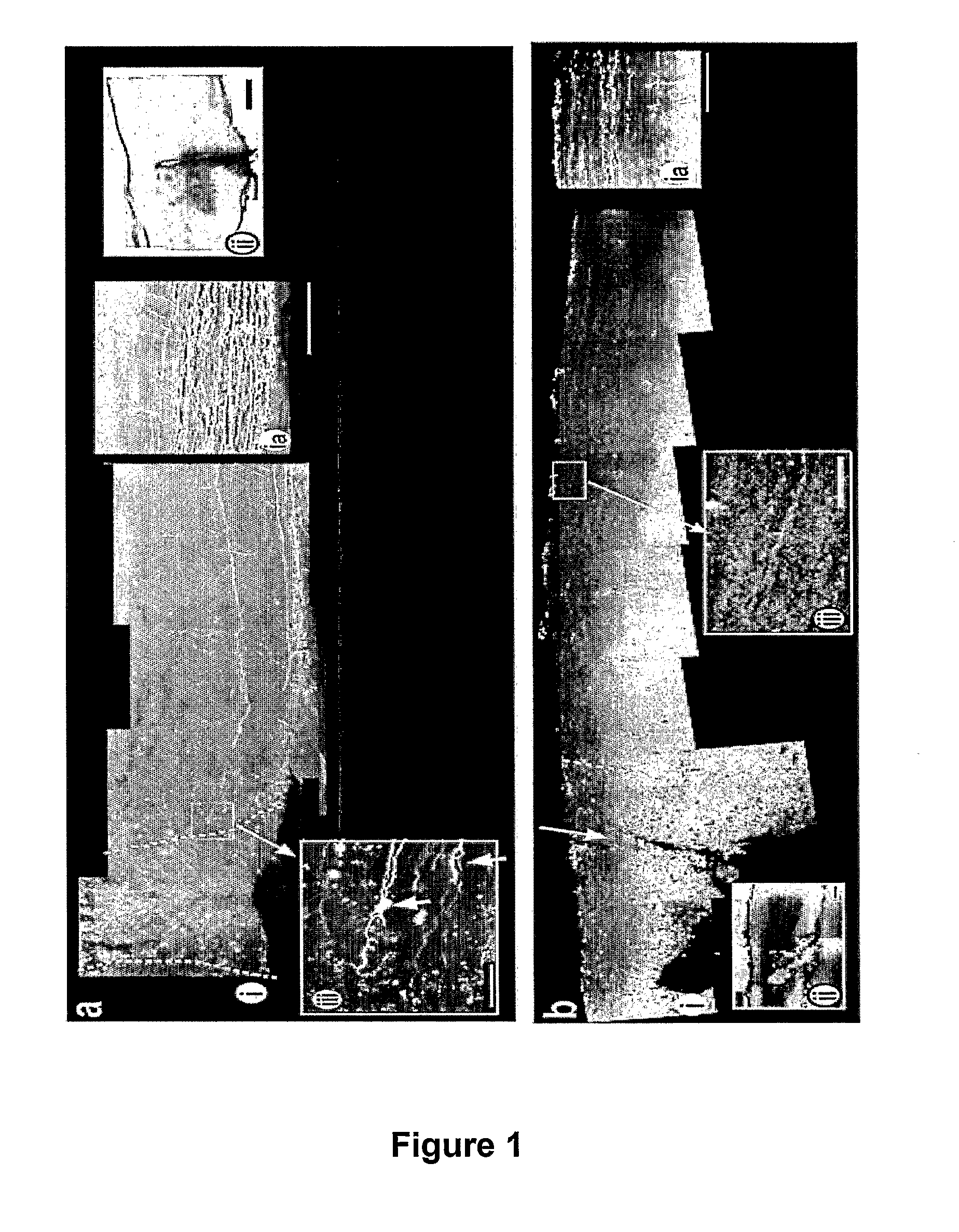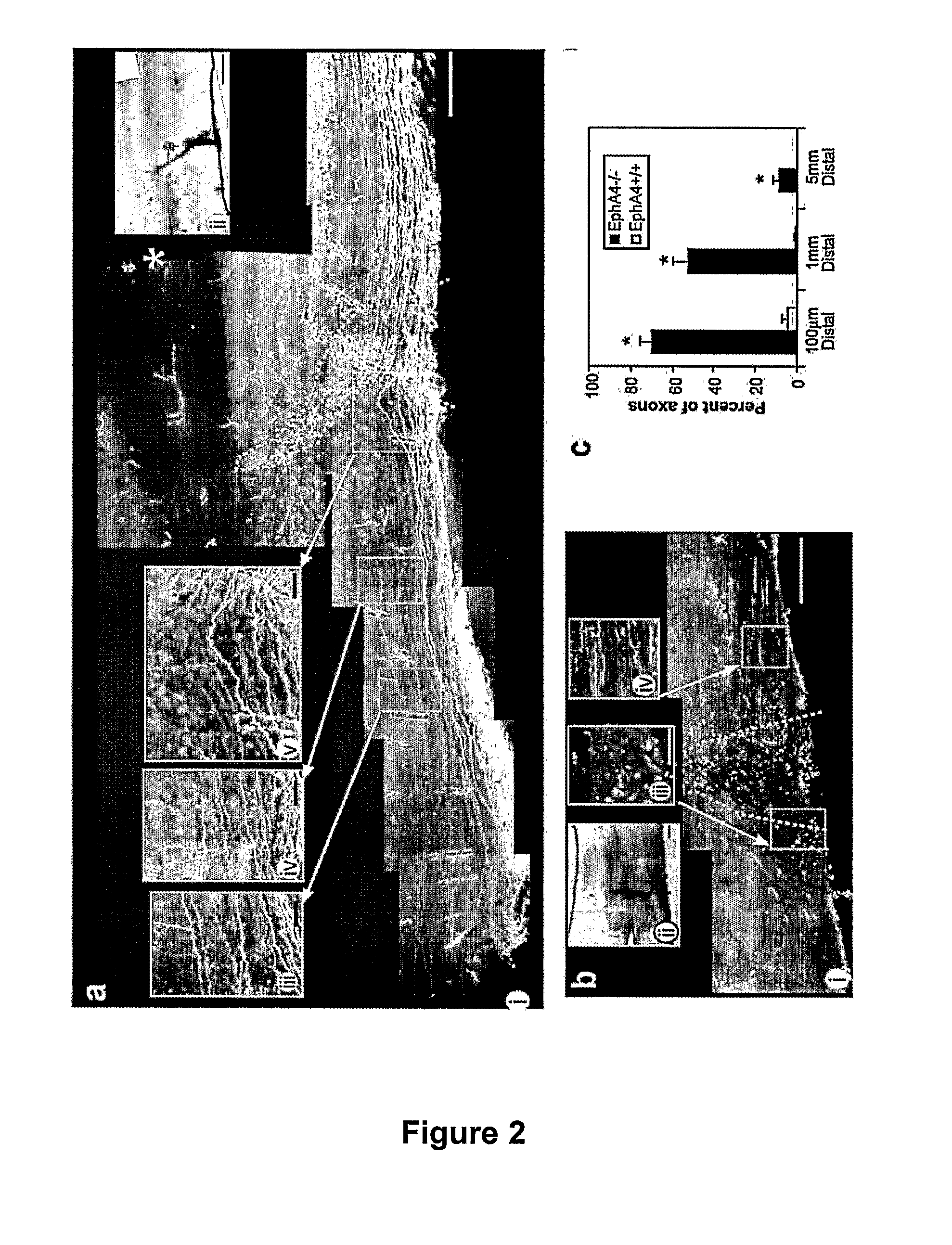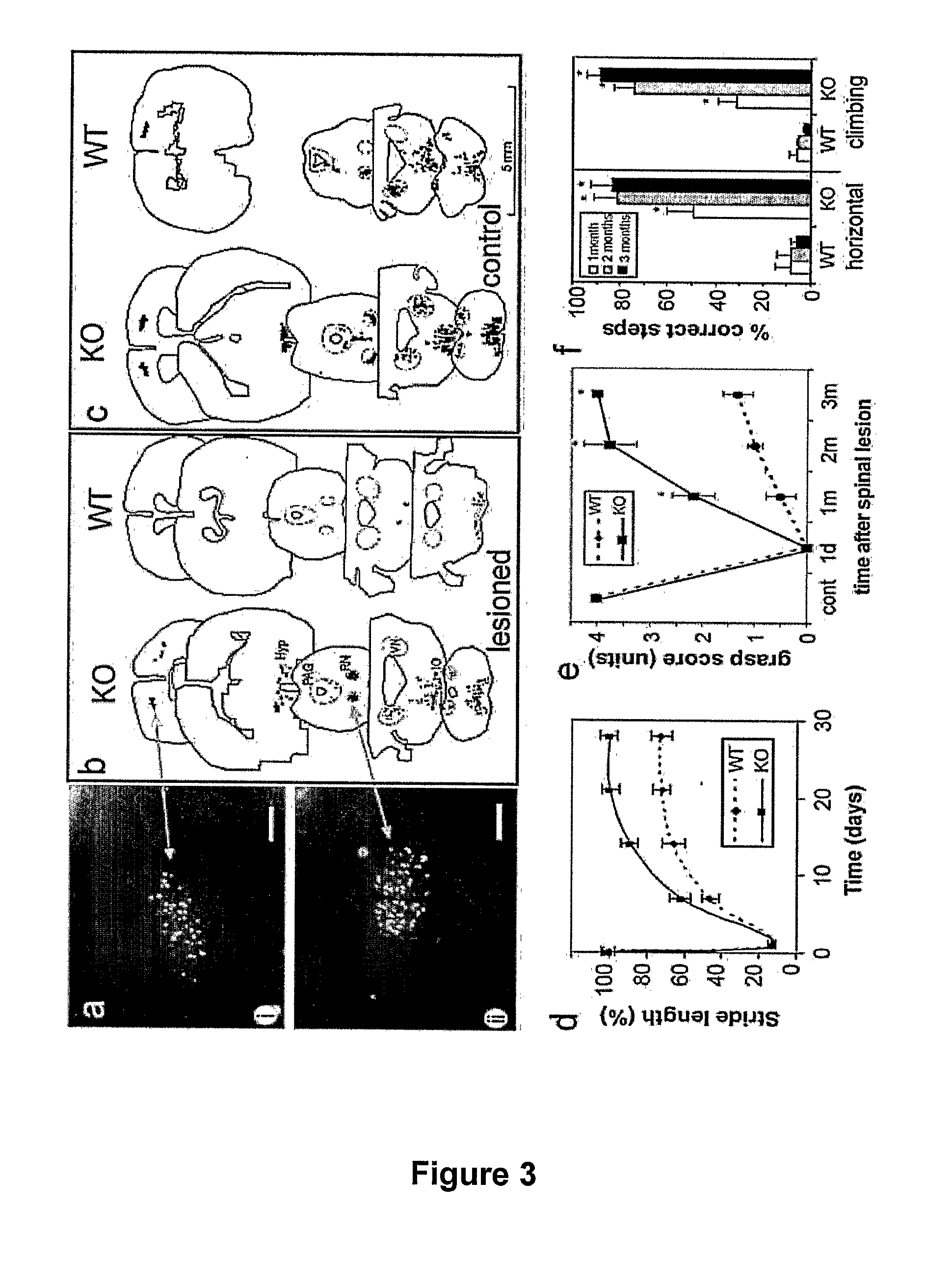Treating Gliosis, Glial Scarring, Inflammation or Inhibition of Axonal Growth in the Nervous System by Modulating Eph Receptor
a nerve system and receptor technology, applied in the direction of dna/rna fragmentation, drug compositions, peptides, etc., can solve the problems of limited regeneration capacity of the nervous system, permeating mental and/or physical disablement, costing society billions of dollars per year in treatment, rehabilitation and sustained welfare, and preventing or decreasing gliosis and/or glial scarring and/or inflammation. , to achieve the effect of preventing or decreasing gli
- Summary
- Abstract
- Description
- Claims
- Application Information
AI Technical Summary
Benefits of technology
Problems solved by technology
Method used
Image
Examples
example 1
Materials and Methods
[0134]The following materials and methods are used in the subsequent Examples which follow.
[0135]Mice
[0136]Adult EphA4− / − and C57BL / 6 mice, 3-12 months old and maintained as previously described (Coonan et al., J Comp Neurol 436:248-262, 2001), were used in this study.
[0137]Spinal Cord Lesions
[0138]Mice were anesthetized with a mixture of ketamine and xylazine (100 mg / kg and 16 mg / kg, respectively). The spinal cord was exposed via a laminectomy, in which 2-3 vertebral arches were removed at levels T12-L1, corresponding to the level of the lumbar enlargement. A spinal left hemisection at T12 was performed using a fine corneal blade (cut twice in the same place to ensure complete section) and the overlying muscle and skin were then sutured. Hemisection was performed on 44 wildtype and 37 EphA4− / − mice. Of these, 28 wildtype and 19 EphA4− / − mice were used for immunohistochemical studies; the remaining animals were behaviorally assessed and the extent of regeneratio...
example 2
Tracing of Lesioned Axons Indicates Extensive Regeneration by 6 Weeks
[0160]As EphA4− / − mice have some developmental corticospinal tract abnormalities, with some axons terminating prematurely or aberrantly crossing the midline (Dottori et al., Proc Natl Acad Sci USA 95:13248-13253, 1998; Coonan et al., J Comp Neurol 436:248-262, 2001), this precluded the use of standard corticospinal tract tracing techniques. In addition, we did not wish to make assumptions about effects of the EphA4 deletion on other axonal tracts. We therefore chose to use an anterograde tracing technique, whereby the tracer was injected into the cervical spinal cord, well above the lumbar lesion site. This allowed us to assess general regeneration of individual axons. Use of this technique in unlesioned wildtype and EphA4− / − mice showed equivalent labeling of descending axonal pathways ipsilateral to the injection site but none contralateral to the injection site.
[0161]At 6 days post-lesion, in both wildtype and E...
example 3
Functional Recovery of EphA4− / − Mice
[0163]The axonal regeneration observed in EphA4− / − mice also had a functional correlate. Mice were behaviorally assessed, first by measuring their stride length (Bregman et al., Nature 378:498-501, 1995) prior to and from 24 hrs to 4 weeks following spinal hemisection. At 24 hrs both EphA4− / − and wildtype mice showed minimal function. EphA4− / − mice regained 100% of their baseline stride length within 3 weeks, while wildtype mice showed only 70% recovery (FIG. 3d) and did not improve thereafter. In addition, 1 month following hemisection, the ipsilateral hindpaw grip strength (FIG. 3e) and ability to walk on a grid (FIG. 3f) were dramatically improved in EphA4− / − mice compared with wildtype. These functions continued to improve up to 3 months post-lesion. Non-lesioned EphA4− / − and wildtype mice both achieved maximal scores in these tests.
PUM
| Property | Measurement | Unit |
|---|---|---|
| Composition | aaaaa | aaaaa |
Abstract
Description
Claims
Application Information
 Login to View More
Login to View More - R&D
- Intellectual Property
- Life Sciences
- Materials
- Tech Scout
- Unparalleled Data Quality
- Higher Quality Content
- 60% Fewer Hallucinations
Browse by: Latest US Patents, China's latest patents, Technical Efficacy Thesaurus, Application Domain, Technology Topic, Popular Technical Reports.
© 2025 PatSnap. All rights reserved.Legal|Privacy policy|Modern Slavery Act Transparency Statement|Sitemap|About US| Contact US: help@patsnap.com



